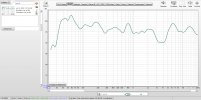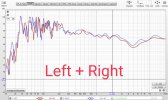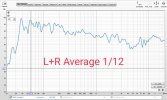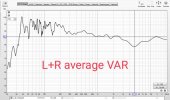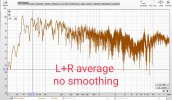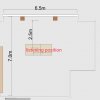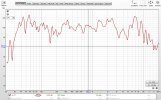nck045
Member
- Joined
- Jul 25, 2020
- Messages
- 32
- Likes
- 67
Got my first REW measurement done today! I measured 1m away from the tweeter level and apparently it confirmed what I hear in my room - boomy low end and some treble roll off. I'm very new to this, any suggestions on how I should apply the EQ? I guess the bass can be tamed down easily enough, but I'm worried about the 5db dip at 4khz which does not look normal. Not sure if this is room induced or something is wrong with my speakers. I am using the 4-way JBL 4344

